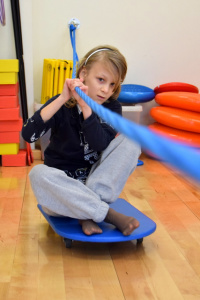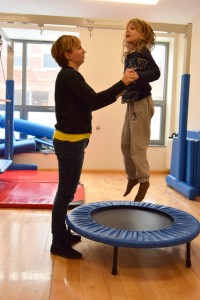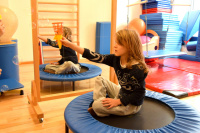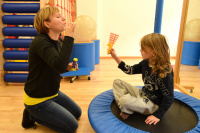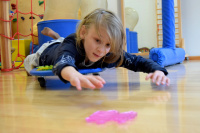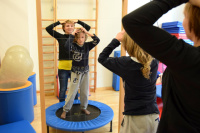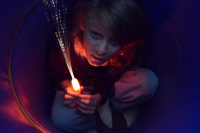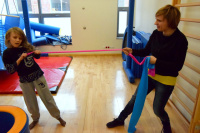The theory of sensory integration derives from basic assumptions referring to such sciences as neurology, psychology and pedagogy. He tries to describe the regularities of the functioning of processes integrating sensory experiences in the central nervous system. Our senses are in constant readiness to receive impressions. The brain is flooded with thousands of information that must be properly recognized, interpreted, linked and arranged so that it can be used in action. This is done through a process called Sensory Integration. The main task of sensory integration therapy is to provide the patient with a controlled number of sensory stimuli such as: vestibular stimuli, proprioceptive, tactile, auditory, gustatory stimuli, so that the child spontaneously formulates adaptive reactions leading to improved integration of these stimuli. During therapy, the relationship between movement and sensory processes develops and improves synaptic connections in the central nervous system. In order for there to be an improvement in the organization of the central nervous system during therapy, such exercises are used that are stimulating for the brain. They must be adapted to the child's abilities, his developmental level, they must not be too difficult or too easy. This results in a change in the behavior of the participant in the motor and emotional sphere, improvement of language and cognitive functions and better learning effectiveness.
It can be said that sensory integration therapy is a "scientific game" in which a child rolling in a barrel, swinging on a platform plays and learns at the same time, willingly takes part in it and it gives him a lot of joy. During therapy, the child is not taught specific skills but strengthens the nervous processes underlying these skills, and they appear naturally as a consequence of improving the functioning of the central nervous system. The therapist places demands on the child so that he or she is able to respond to them with increasingly complex adaptive responses.
AI therapy is not a learned, constantly repeating exercise regimen, but the art of continuous analysis of the child's behavior, permanent selection and modification of the tasks used for him. It takes place in a large room, equipped with specialized instruments. This equipment is designed to stimulate the vestibular system, proprioceptive and tactile, but also visual, auditory and olfactory. The atmosphere during therapy is conducive to the development of an internal need to explore the environment. The child, feeling that he is successful in more and more complex tasks, raises his self-esteem and willingly participates in classes. They often begin to perceive the world around them better. Such experiences in managing one's behavior begin to be transferred to other life situations outside the therapy room, which parents and teachers notice. The image of the child and his functioning in the environment change. It is important to be aware that children will not grow out of sensory integration problems.


